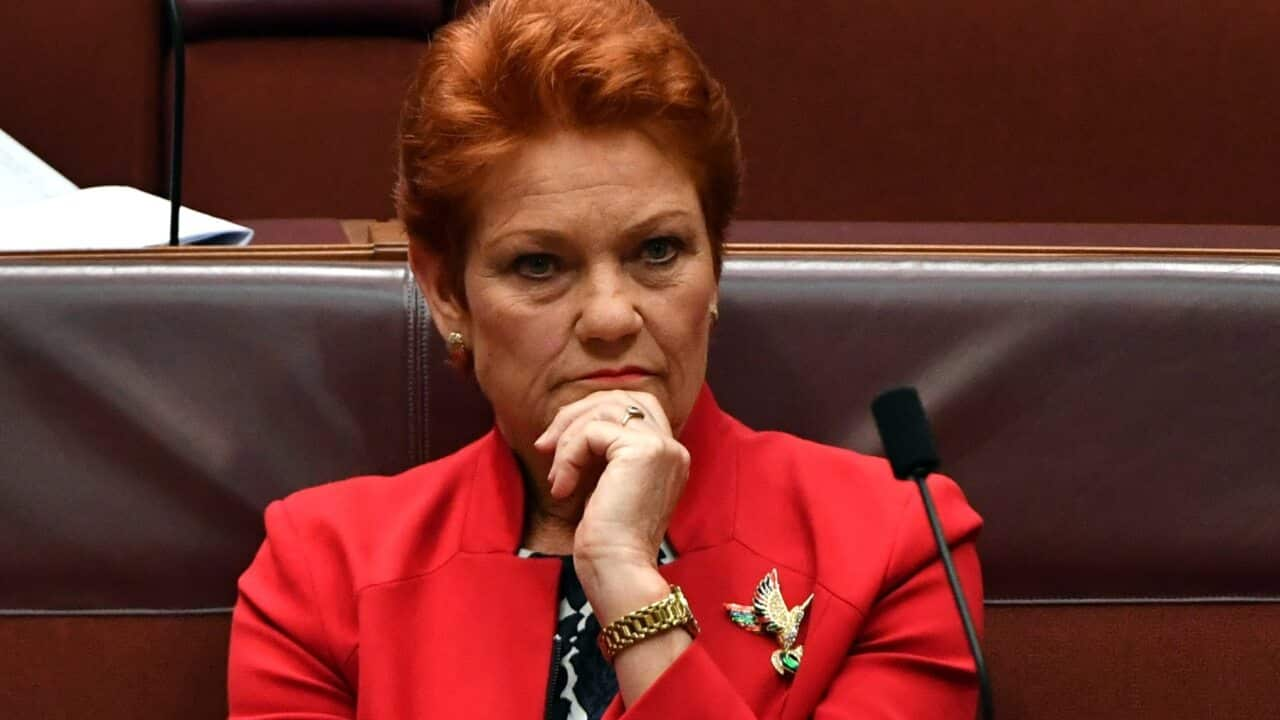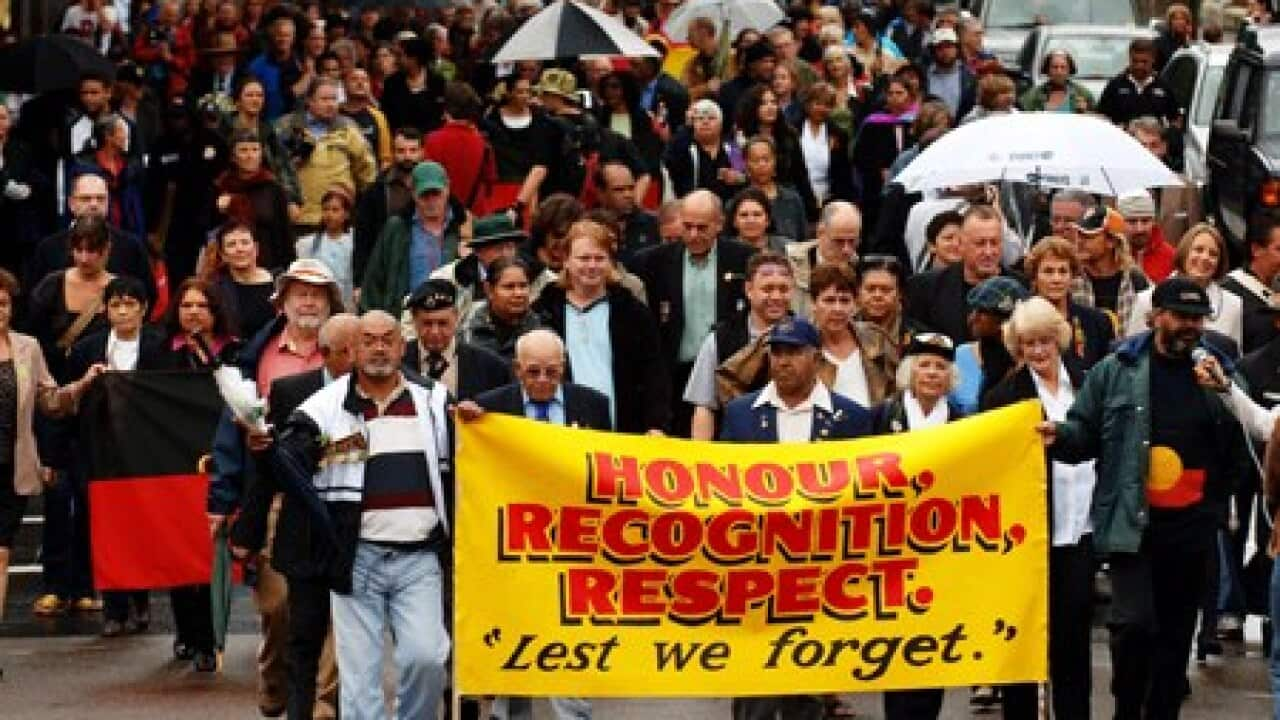Anthony Albanese made an appearance at Bluesfest over the weekend. For devoted attendees, who've waited years for the beloved music festival to return from the pandemic, a pollie popping up was perhaps less than welcome.
So while Albo was trying to get out his Acknowledgement of Country, some boos could be heard mixed in with more supportive noises from the crowd.
This got the cogs in working in the mind of Pauline Hanson, who took to her Facebook to vent.
“Some of you might not realise but this ‘welcome to country’ isn’t some ancient tradition. It is a modern invention,” Hanson posted on her official page.
“I don’t know about you but I am very tired of being left out of the ‘welcome’ to my own country.”
Not only has she confused the Welcome to Country (performed by Traditional Owners) with the Acknowledgement of Country (undertaken by non-Indigenous people in the absence of Traditional Owners), but she's clearly wrong about its origin.
The Welcome to Country is ancient, used by First Nations people to ceremonially accept people onto their lands for thousands and thousands of years.
But even its 'modern use', which Hanson is pointing to, dates back half a century.
It's believed to be first performed by a lore man of the Widjabul Wia-bal people at the Aquarius Festival at Nimbin, in May 1973.
So while Hanson says the current use of the Welcome To Country is "left-wing virtue signalling", it's seen more sunsets than a number of other "True Blue Aussie Icons".

The Injinoo Dance Group rehearse before performing during a Welcome to Country ceremony. Source: AAP
It's older than... the Australia Day holiday
The date of this holiday has varied wildly over the years. It has variously been held on July 30, July 28, and many different dates at a state or territory level.
Despite this, suggestions of changing it again in recognition of the pain it causes many First Nations people is met with outrage and incredulity by Pauline's ilk.
The country only nationally adopted January 26 as a nationwide holiday in 1994, another modern invention. 

Australia Day, or differently-titled holidays celebrating the Aussie identity, have been celebrated on a range of dates throughout our history. Source: Australian War Memorial
it's older than... the Green & Gold
The national colours, which can be seen draped over our sports players year-round, are synonymous with "Australian" culture.
Athletes speak with pride of representing "the green and gold", and even the international icon for Australian-made products is a 'roo hopping along in the patriotic hues.
However it was a good decade after the Nimbin Welcome to Country that the token tones were adopted, in 1984.
Looking forward to Pauline's blog post about that one!

The modern invention of the "Green and Gold" colours on the Opera House (which, incidentally, is also new, finished in 1974). Source: AP
It's over a decade older than... Advance Australia Fair
The current national anthem was adopted after the first modern use of the Welcome to Country.
It was changed from 'God Save the Queen' after an opinion survey revealed a lack of association with the traditional anthem, in 1984.
The anthem was changed again at the start of 2021, when the (patently false) sentence 'We are young and free' was changed to 'one and free', in recognition of the fact 60 thousand years on the continent isn't exactly 'young' (or modern...).
While Scomo apparently consulted his cabinet and the Speaker of the House on the wording change, it's unclear whether any First Nations people were asked for their opinion.
It's older than... the end of the White Australia Policy
Up until 1974, a set of historical policies were in place that prohibited the immigration of non-European people, especially Asians and Pacific Islanders, to Australia.
Throughout colonisation, the majority of the white population of Australia held racist views towards other races. These views particularly focused on people of Asian descent but also applied to First Nations people, who were considered a 'dying race.' The laws were collectively known as the White Australia Policy, stemming from a declaration by Attorney-General Alfred Deakin in 1901, where he said:
The laws were collectively known as the White Australia Policy, stemming from a declaration by Attorney-General Alfred Deakin in 1901, where he said:

Saying the quiet part loud: a song celebrating the White Australia Policy. Source: Supplied
That end, put in plain and unequivocal terms … means the prohibition of all alien coloured immigration, and more, it means at the earliest time, by reasonable and just means, the deportation or reduction of the number of aliens now in our midst. The two things go hand in hand, and are the necessary complement of a single policy – the policy of securing a ‘white Australia’.
As a , non-Anglo people, including Aboriginal and Torres Strait Islanders, made up only 2 per cent of the Australian population in the early 1940s.
Thankfully, the Holt government made steps to get rid of it in 1966 before the Gough Whitlam government completely eliminated the policies in 1974 with the introduction of new laws like the Racial Discrimination Act.
It's older than... new Parliament House
The modern parliament building we're all familiar with was a replacement for Old Parliament House, which was retired in '88 after 61 years as the seat of power.
Even though it's quite a bit newer than the Welcome to Country, the presumption is Pauline is happy to keep turning up there and collecting her $211,000 salary.

Parliament House with the old Parliament House in the foreground. Source: AAP
and it's older than... the One Nation party
After being turfed as a candidate by the Liberal Party for her racist comments about First Nations people, the One Nation party was founded in 1997.
Pauline's maiden speech to parliament infamously warned of the country being "swamped by Asians", an auspicious and classy start to what was to become a career littered with equally racist sentiments.
More recent examples include Pauline's motion in the senate to declare that "It's OK to be White", which was enthusiastically supported by government members, but then it was narrowly defeated in the Senate.

Protesters angry at the 'modern invention' of Pauline Hanson's One Nation in 1998. Source: AP











